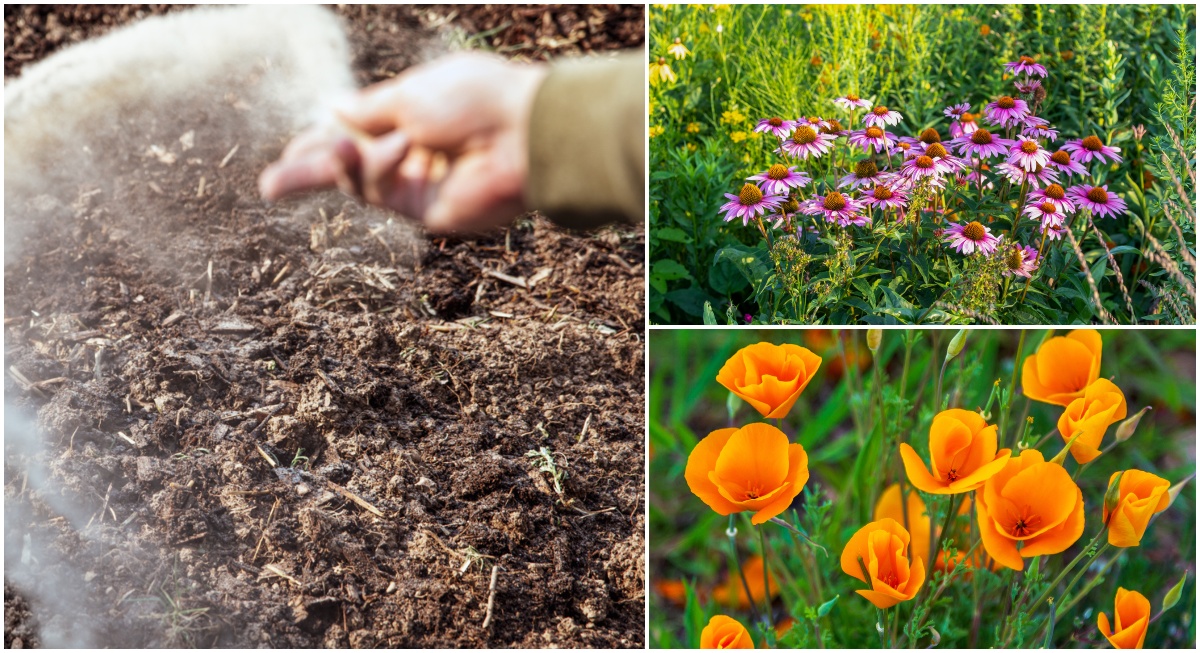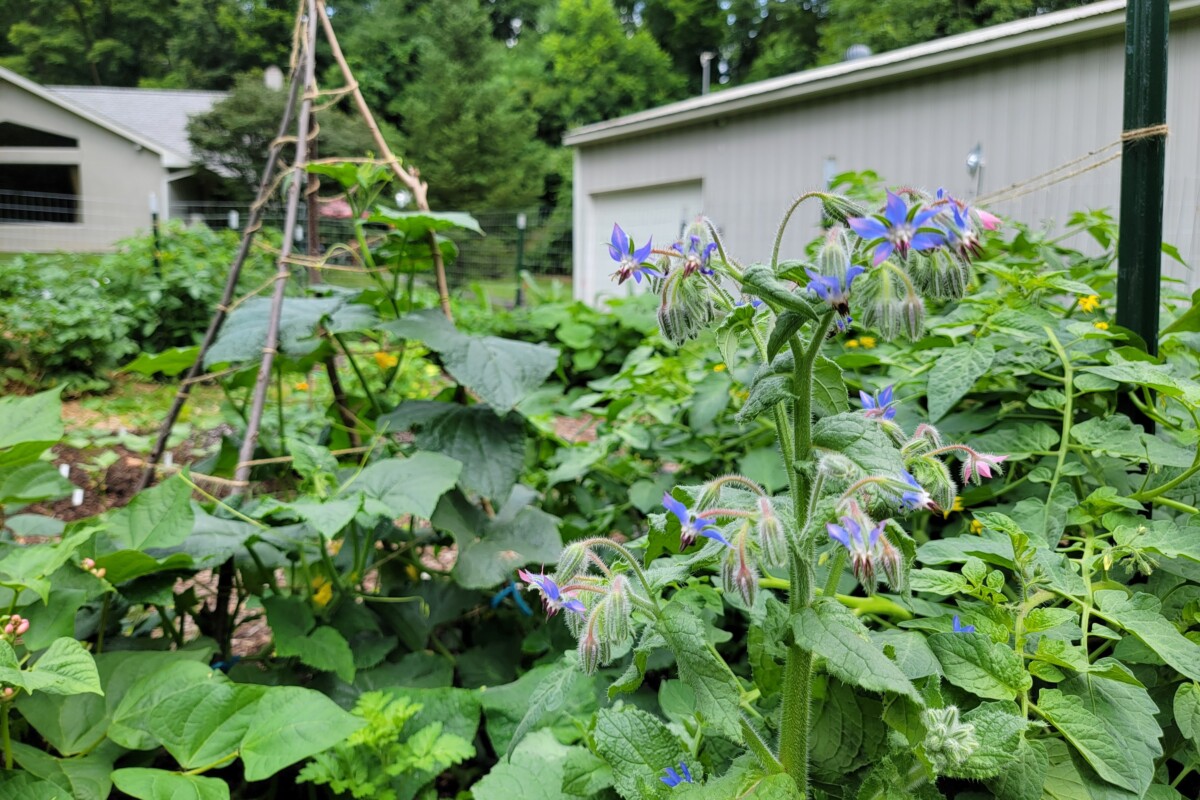
Have you ever noticed how we tend to keep our gardening segregated? Veggies go in one bed, and flowers go in another. Oh sure, we might plant the odd marigold next to our tomatoes because we read somewhere they’re companion plants.
But for the most part, flowers stay in flower beds, usually near the house. They don’t go in with the veggies. But they should. You should absolutely plant flowers in your vegetable garden. I can think of plenty of good reasons why. Seven reasons, actually.
Gardeners who plant flowers with their vegetables are in on a well-kept secret. Having flowers in with your veggies is good for them, both of them.
1. Plant Diversity Leads to Bigger Yields
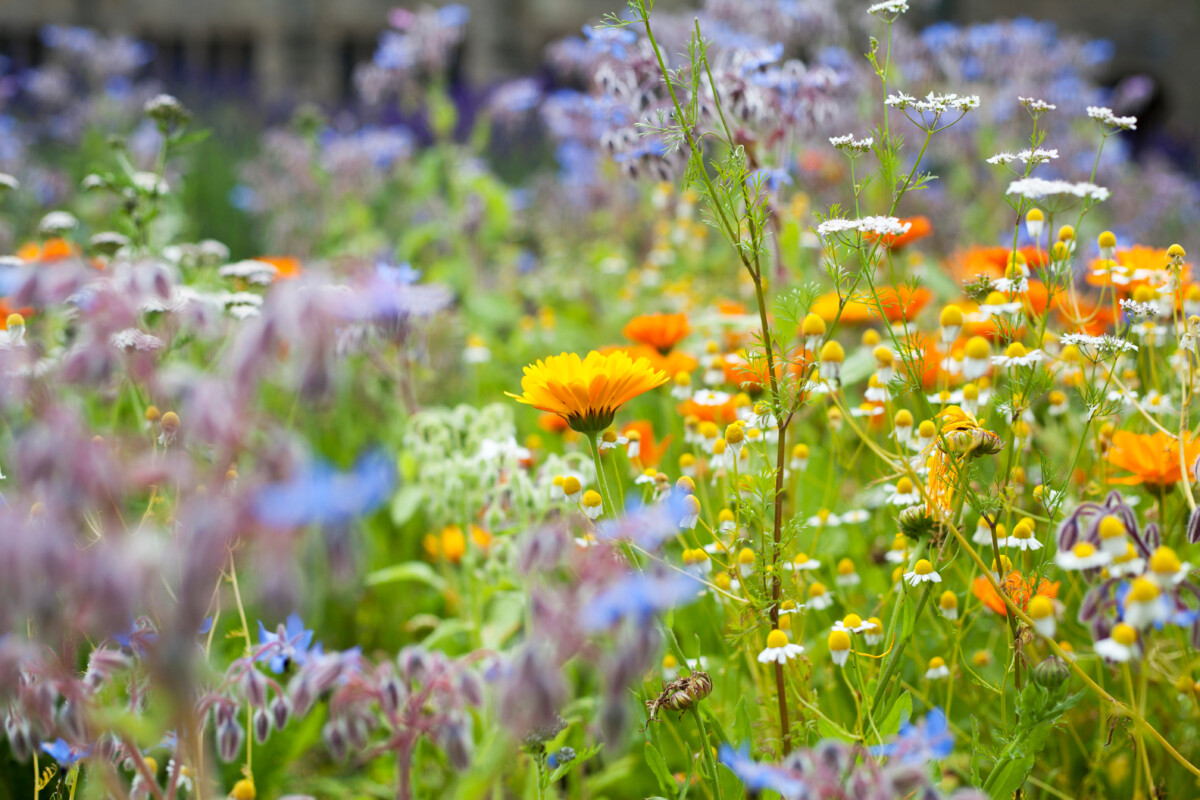
Back in 1859, in “On the Origin of Species,” Charlies Darwin made a pretty interesting prediction. He speculated that a plot of land growing grass species that were distantly related would produce more than the same plot of land planted with a single grass species.
Recent research has proven this to be true. In fact, the more distant the plants are from one another, the more productive both will be.
That’s because plants of the same or even closely related species will require the same nutrients and resources from the ground.
By planting many different species of plants together, they won’t be competing with one another, so they thrive.
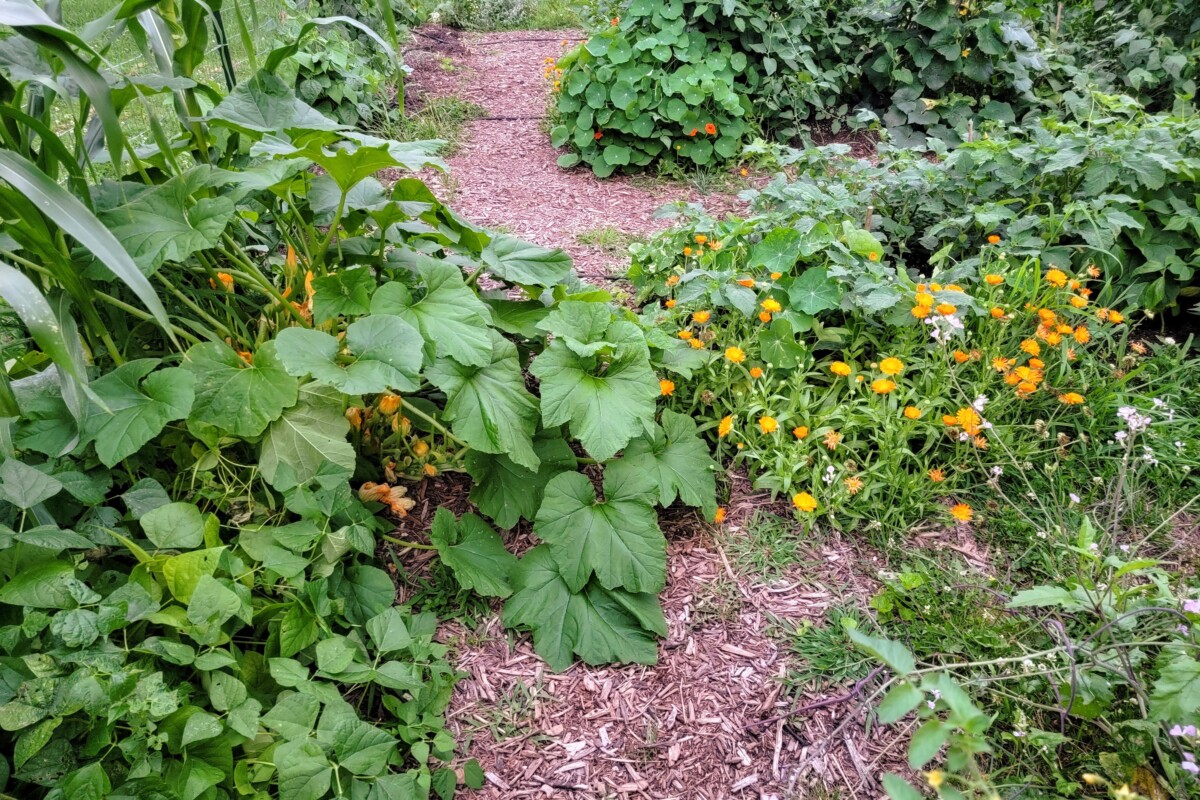
Can you imagine getting bigger yields from your garden simply by planting flowers among your veggies? It doesn’t get much easier than that. If you want to get serious about plant diversity, skip the neat, tidy rows and intermix your vegetables, too.
2. Prevent Weeds With Flowers
Weeds are opportunists. Many can spend years (some even decades) lying dormant in the soil, waiting for the right conditions to sprout up, take over, and make your growing season miserable.
One thing that invites a weed invasion is bare earth.
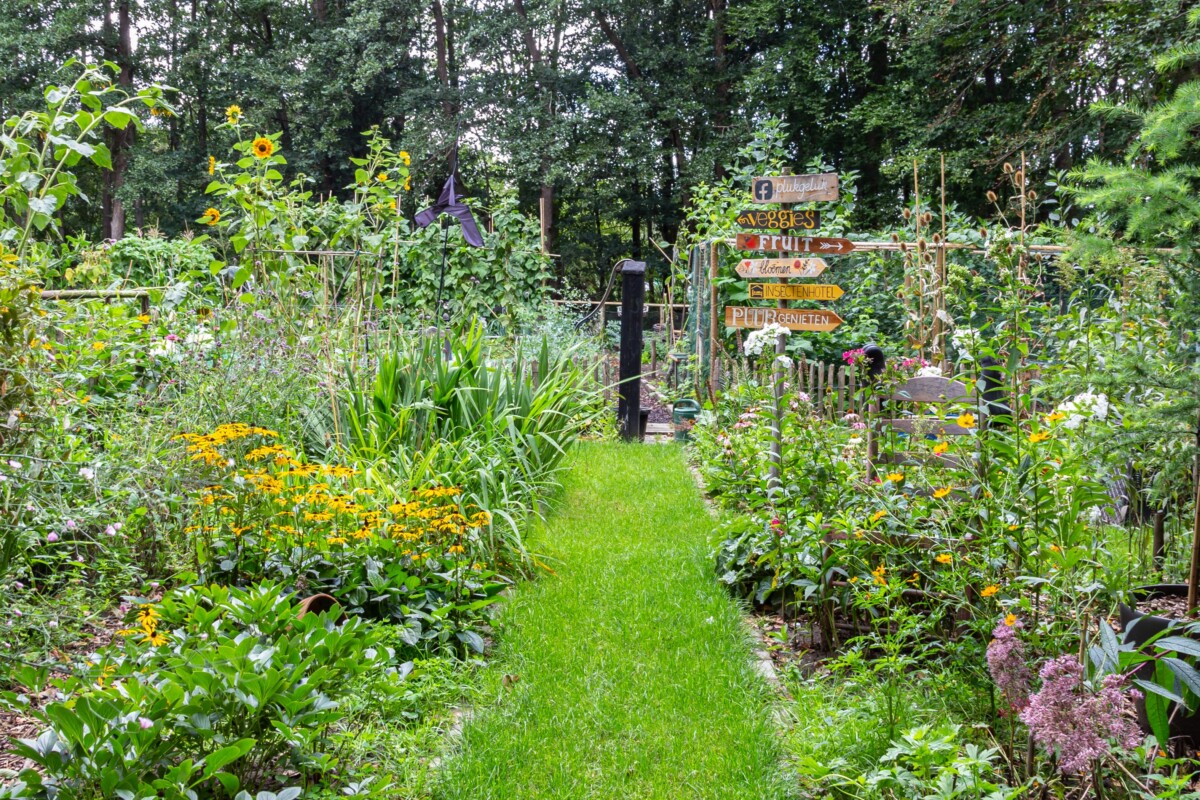
Leaving spots in your garden unplanted is an invitation for some low-creeping weed to come in and take over. (I’m looking at you, purslane; you’re lucky you’re a tasty edible weed.) This is especially true if you till your soil. Weeds love nothing more than recently disturbed earth. It’s often all that’s needed for a dormant weed seed to be jolted into germinating.
I have yet to meet a gardener who exclaims, “Oh yeah, I love weeding!” Fill in bare soil in your garden with plenty of flowers, and you’ll have much less weeding to do.
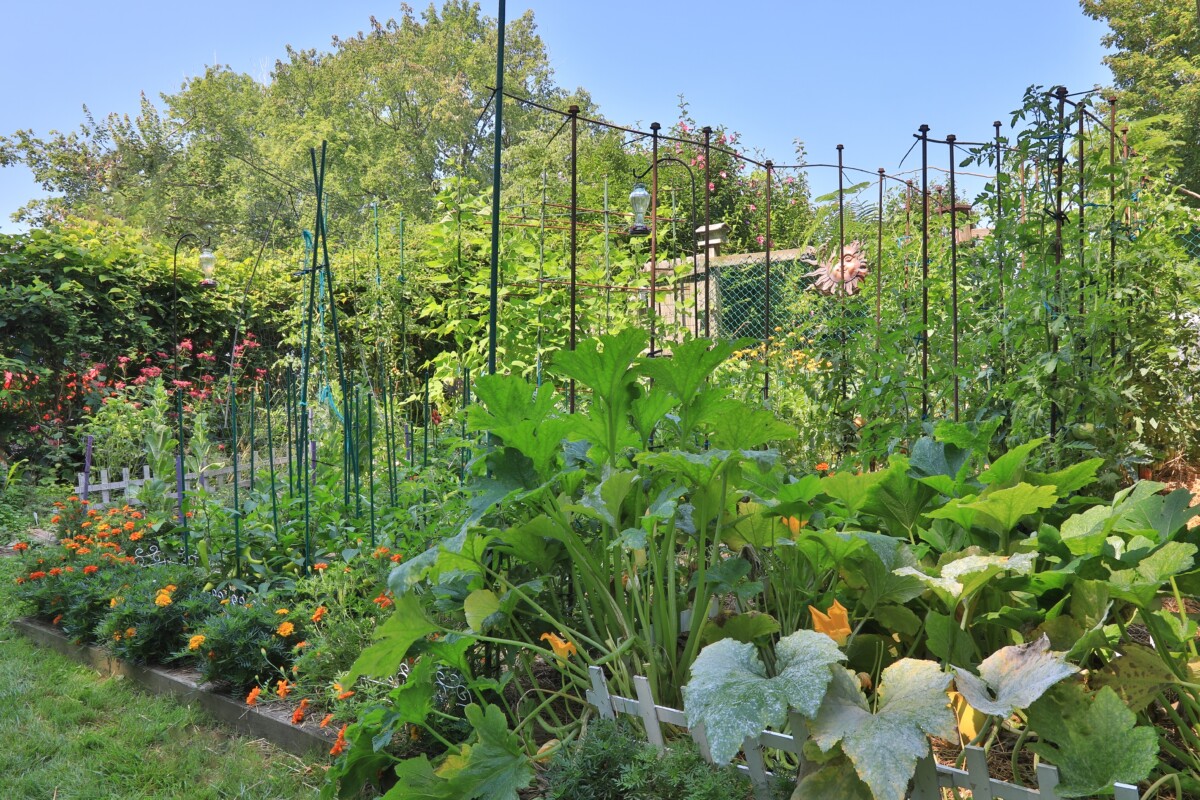
3. Prevent Soil Erosion
Likewise, having bare soil leads to soil erosion. When you lose soil, you also lose nutrients. If you’ve got many bare spots in your garden, then with every rainfall, it’s slowly washing away. That erosion adds up over the years. As the soil is degraded over time, it’s not as good at retaining water because you’re losing the organic matter and other particles that are good at holding it.
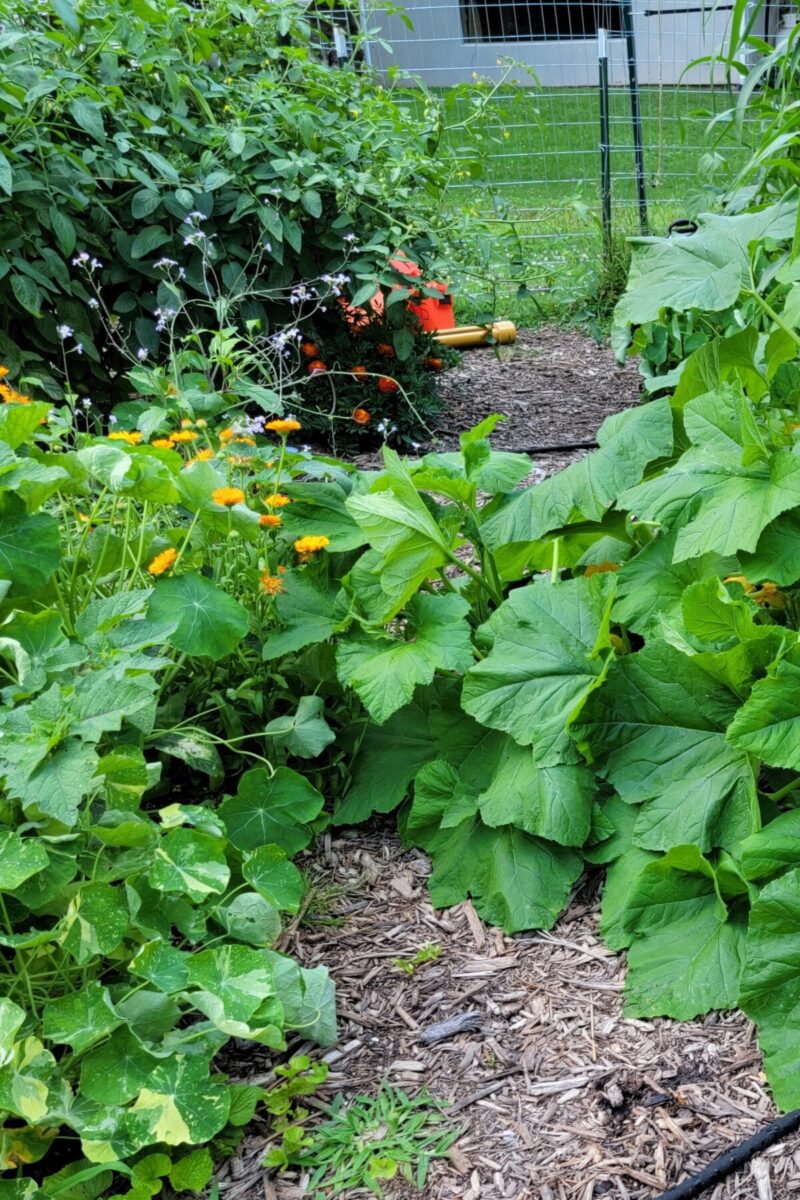
Soil erosion goes beyond losing soil from your garden, though; it gets washed into waterways, along with anything you’ve put in your soil. This presents a real problem for streams, rivers and lakes as it negatively impacts fish and other wildlife in those waters.
Keep your soil where it will do you good by planting flowers in areas of your garden with bare soil. Another great way to prevent soil erosion is to go no-dig.
4. Better Pollination for Your Veggies
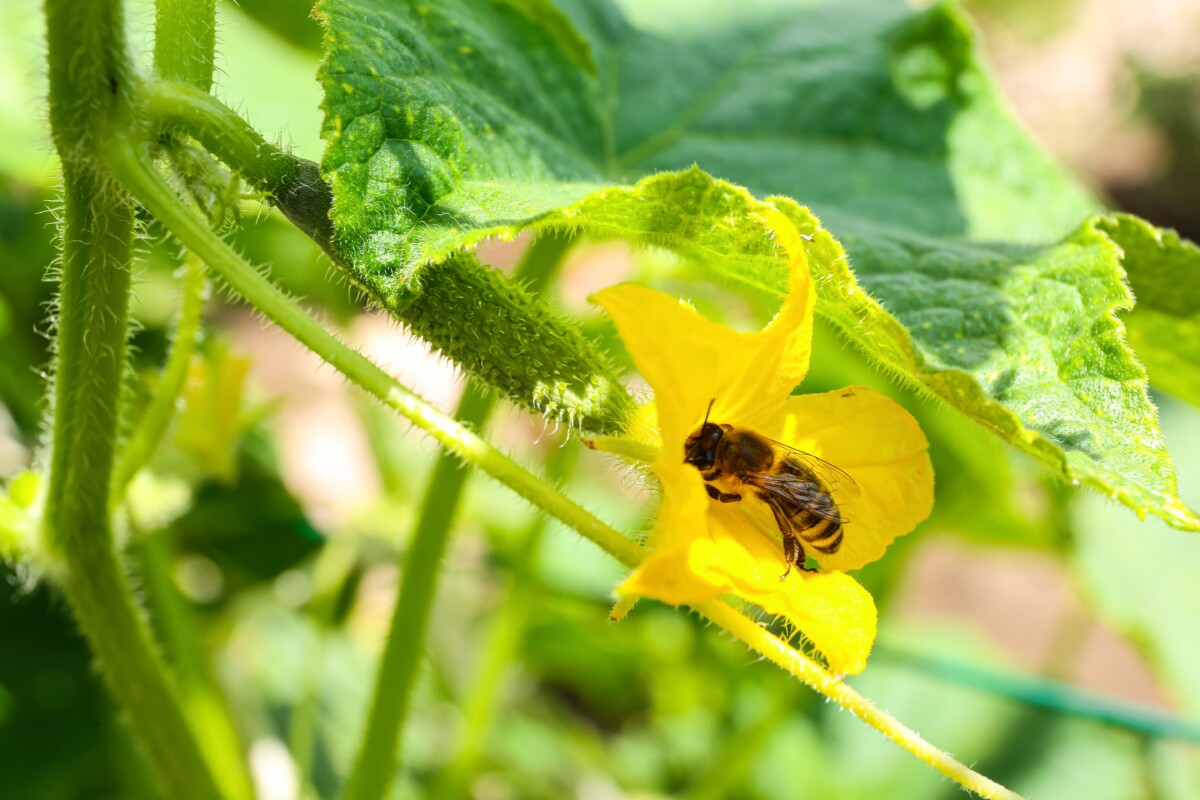
As pollinator populations continue to decline, even home gardeners feel the pinch with lower pollination rates. Plenty of gardeners have taken to hand-pollinating tomatoes and squash in an effort to get higher yields.
But there’s a much easier way – plant flowers among your vegetables. Make your garden more visible to the pollinators in your area by attracting them with patches of colorful flowers. Not only will you benefit from better yields because your fruit will get pollinated, but you’ll be helping out native pollinator populations by supplying them with a food source. It’s a win-win.
5. Attract Predatory Insects
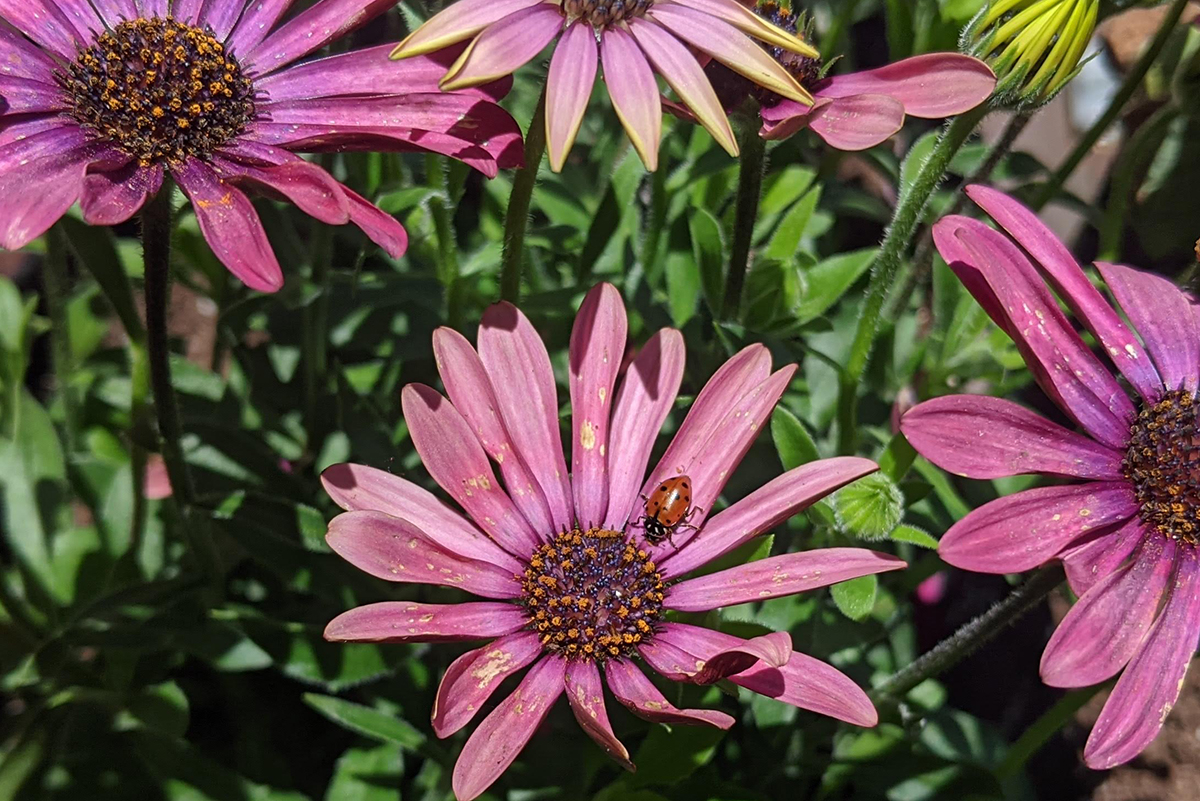
I know attracting bugs to your garden on purpose seems a little counterintuitive. But we all know the pests end up there anyway, and there are many species of insect that love chowing down on other insects that are a real pain in the asparagus. I can think of about a dozen predatory insects off the top of my head that would happily take up residence in your garden and help with pest patrol.
Invite these pest-munching insects to reside in your garden with plenty of flowers and foliage. The more diverse your garden is, the more species you will attract.
6. Create a Diversion with Trap Crops
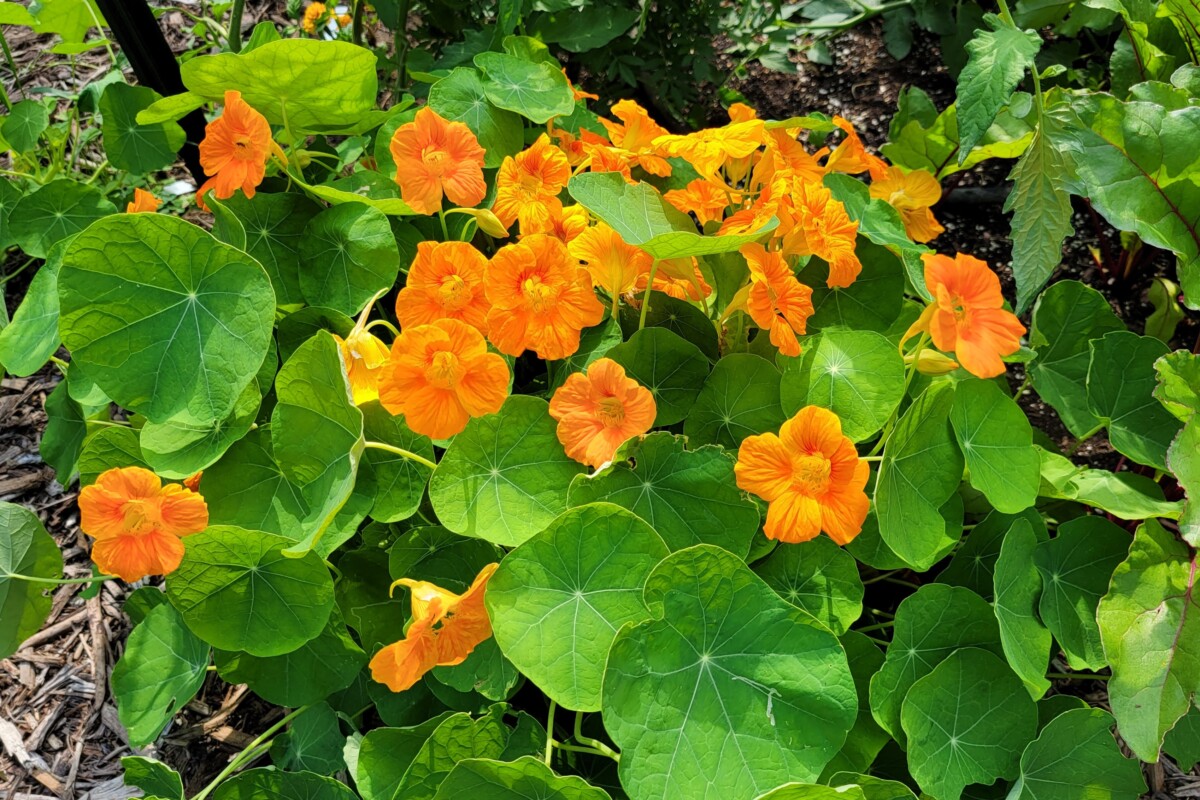
If you’re unfamiliar with trap crops, Cheryl wrote up a brilliant piece on how to use them. The general notion behind trap craps is that pests are likelier to eat the plants that appear first. So, if you plant something tasty for them to nibble before you plant the crop you want to harvest, you will have fewer pests bothering your desired crop.
You’re planting a “gimme” just for the pests. Consider it an offering to the minuscule pest gods that live in your garden.
Luckily, numerous flowers make great trap crops – tansy, nasturtium, calendula and sunflowers are just a few.
7. Because It’s Beautiful
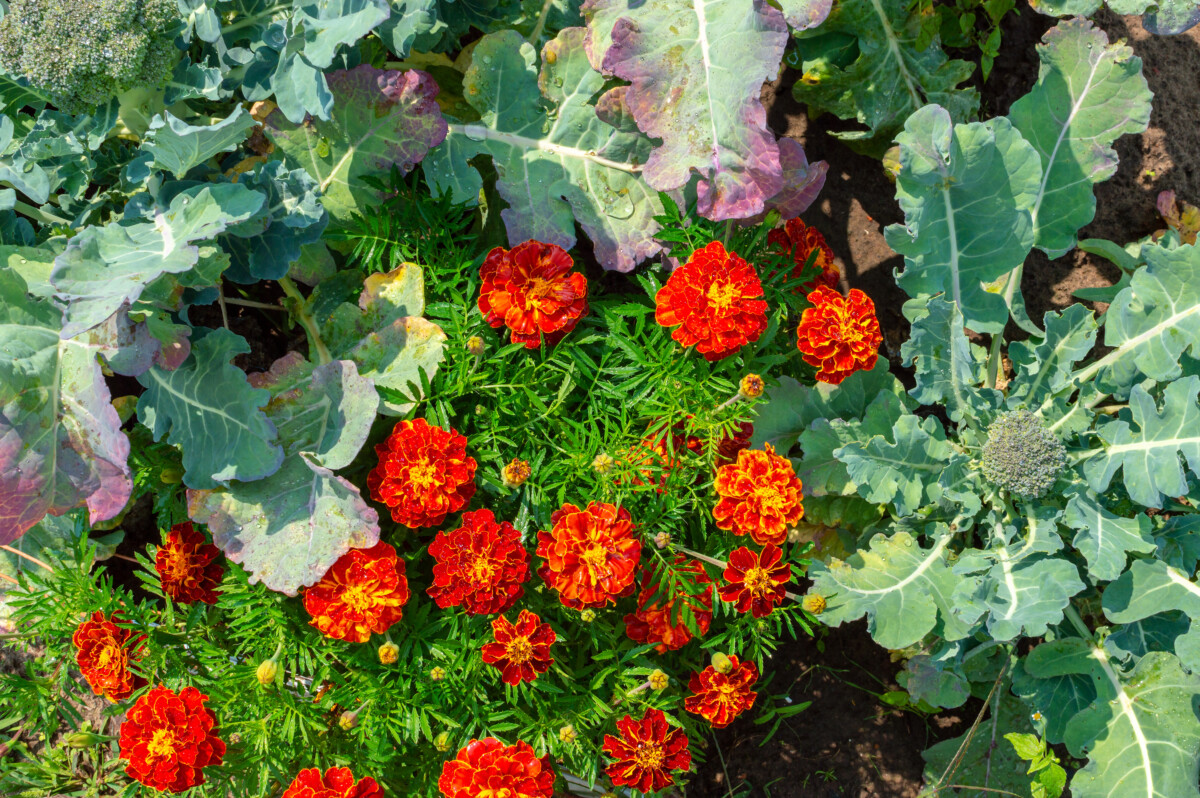
Don’t get me wrong, my vegetable garden is beautiful as is, but when I started adding flowers among my veggies, I found myself wandering in my garden more often simply to enjoy the beauty of it all. So often, we see vegetable gardens as being strictly utilitarian. There’s no reason why they can’t also be a space of beauty and tranquility.
Plant flowers that are great for fresh-cut bouquets, and you’ll have more than vegetables to harvest each time you head out to the vegetable patch. If you need a little inspiration, here are 15 different types of annuals that are great in floral arrangements.
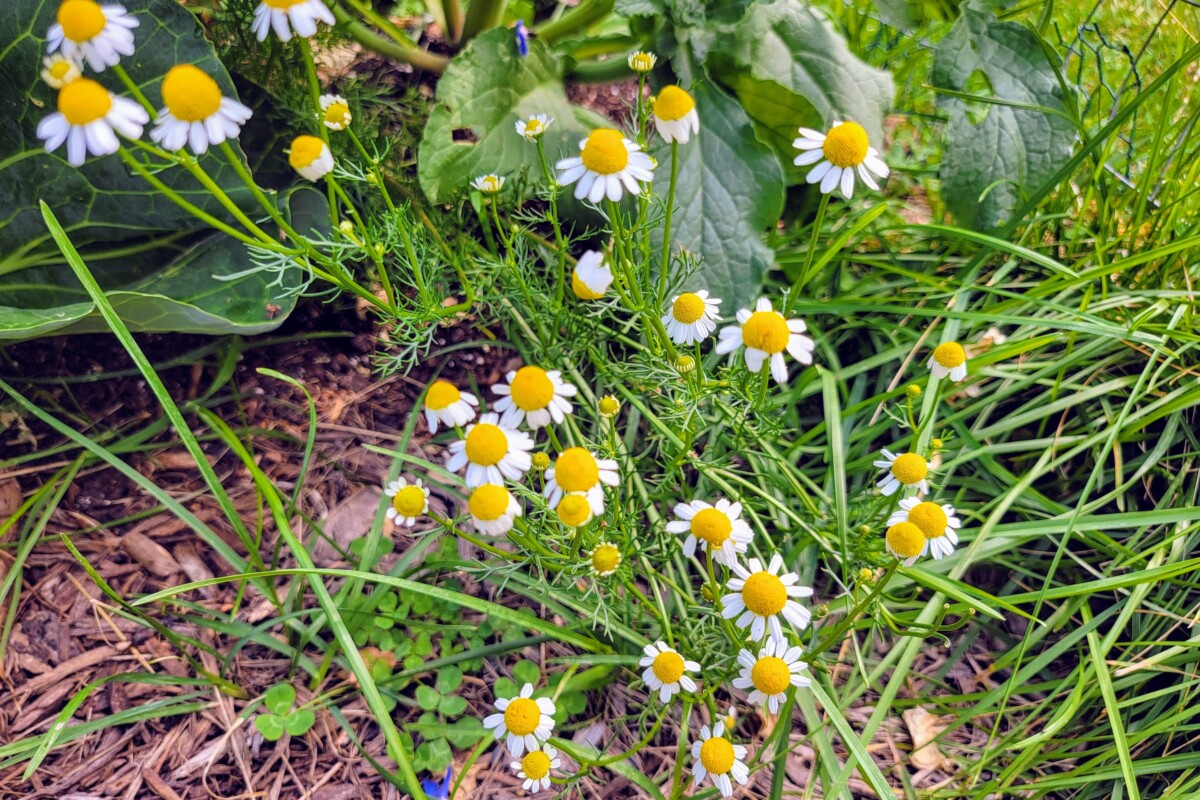
Fewer weeds, larger yields, fewer pests and a beautiful garden – of course, you’ll start planting flowers in your vegetable garden now. Once you start, you’ll wonder why you weren’t doing it all along.
Read Next:

Get the famous Rural Sprout newsletter delivered to your inbox.
Join the 50,000+ gardeners who get timely gardening tutorials, tips and tasks delivered direct to their inbox.


